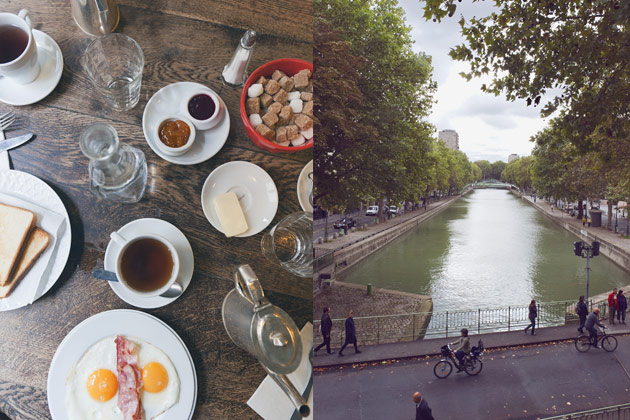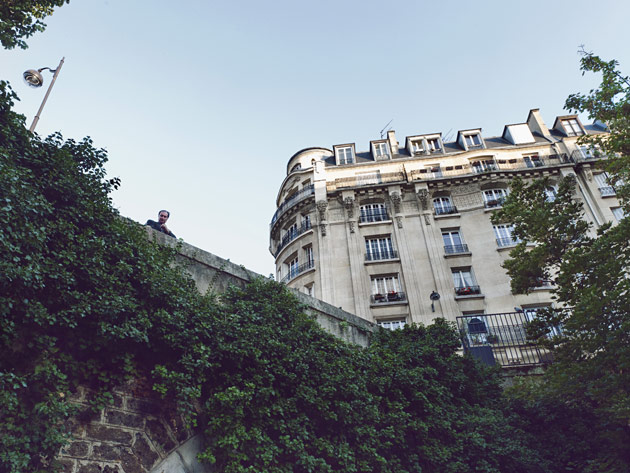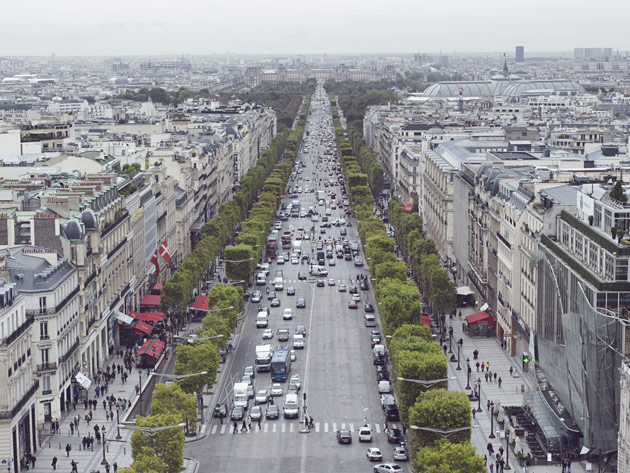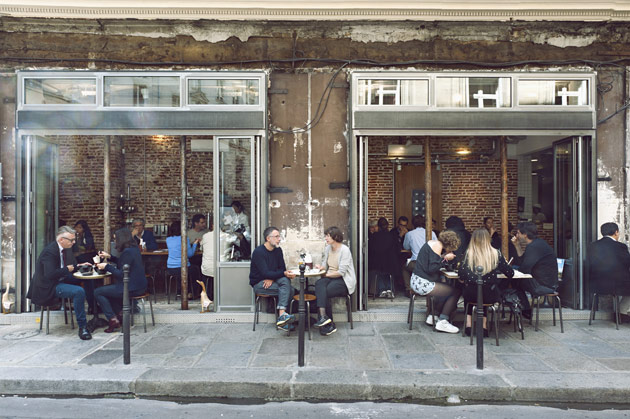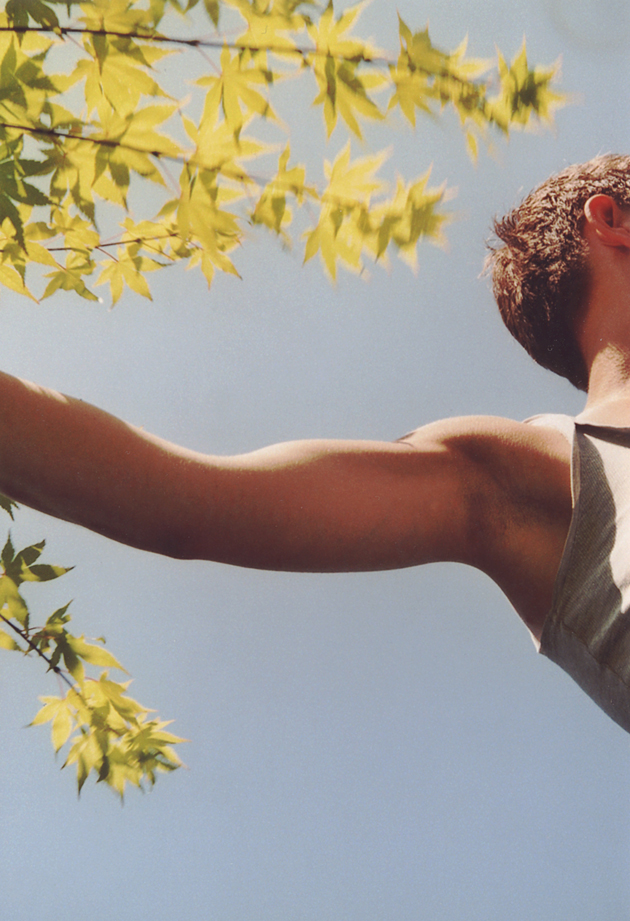
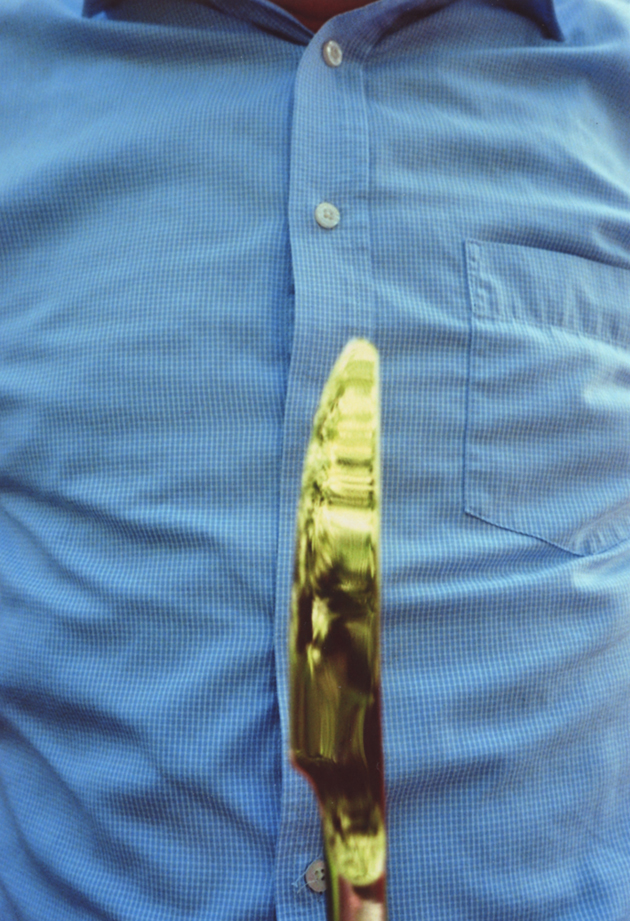
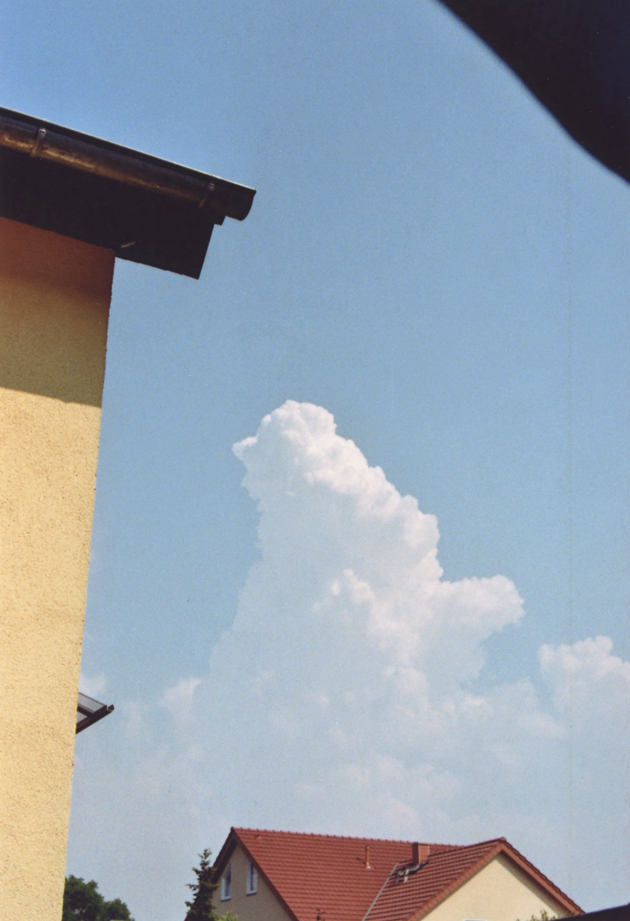
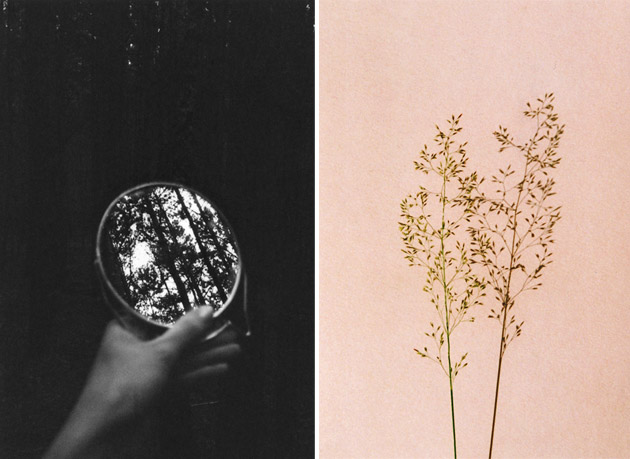
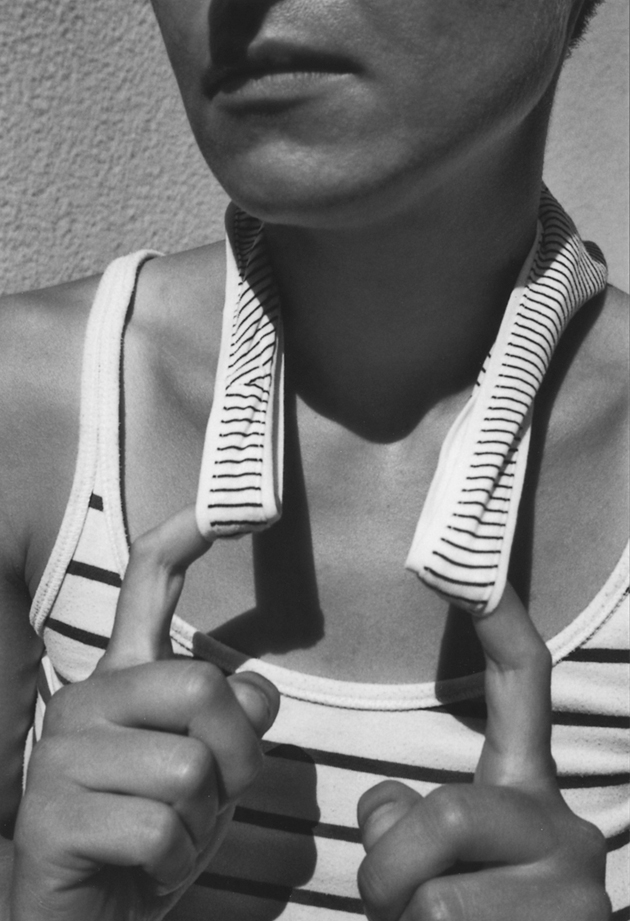
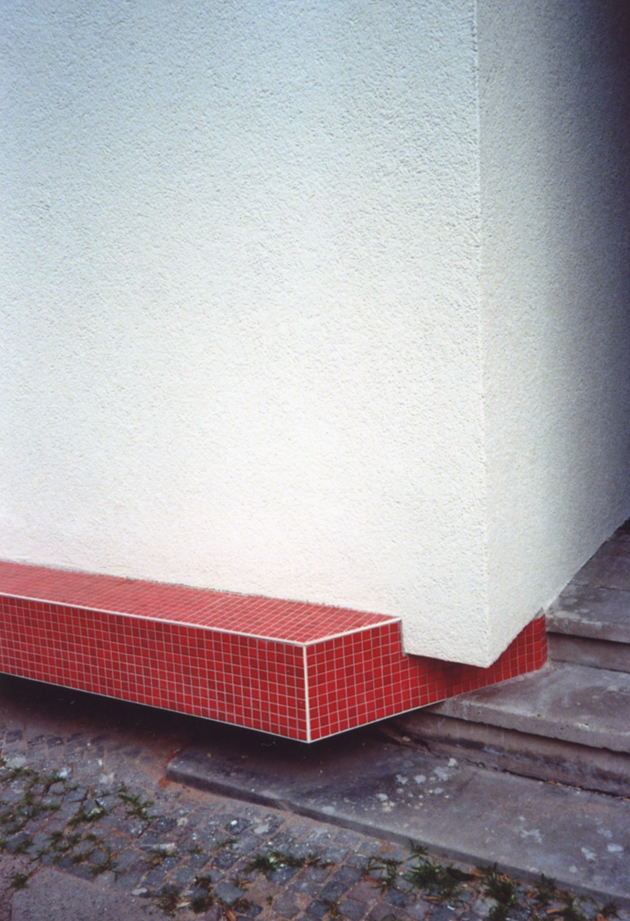
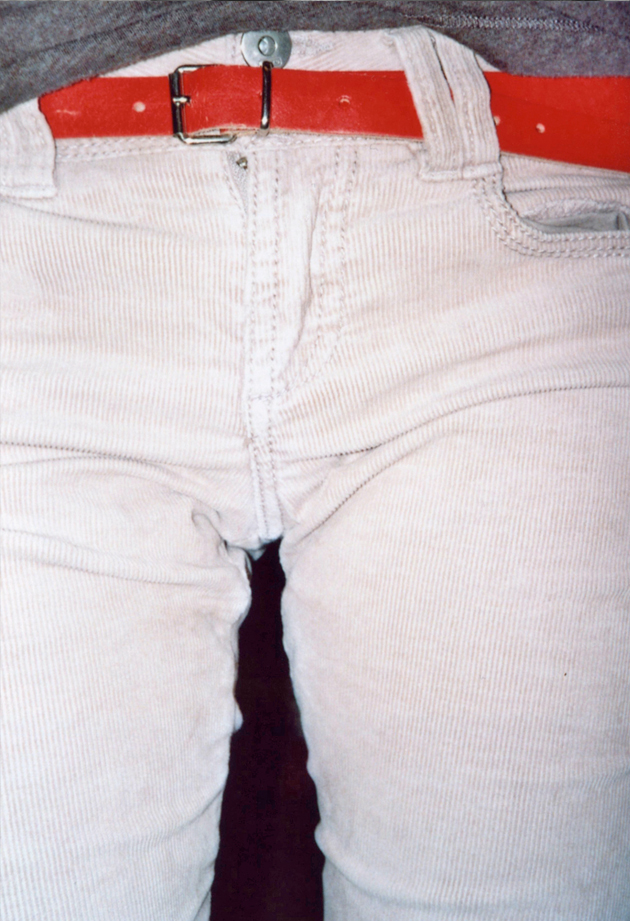
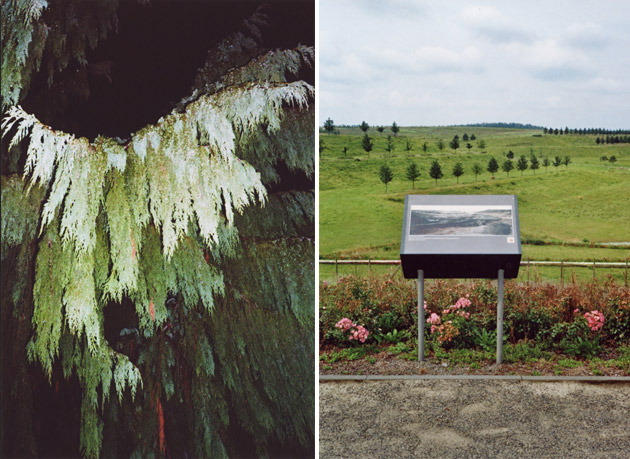
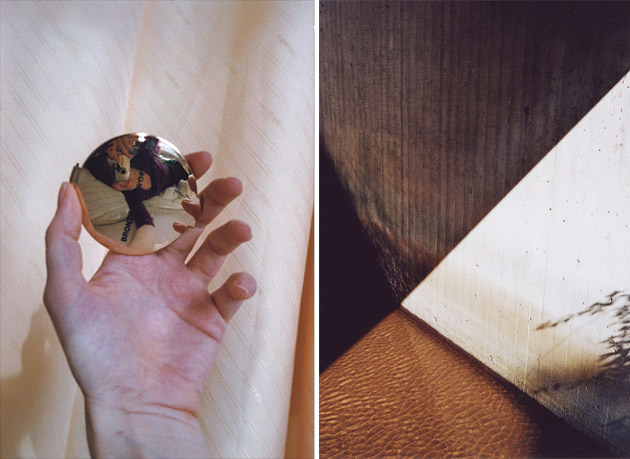
My first thought after hearing that Rough Trade was planning to open a 15,000 foot record store — the biggest record store in New York City — near the waterfront in Williamsburg? Good. Luck. But maybe I’m pessimistic. After all, the store did open last week, after four years of hurdling, complete with a Five Leaves coffee shop, a working bar, and a 300-person venue that hosted Sky Ferreira its first night. If I were in charge, I’d say things were looking pretty good.
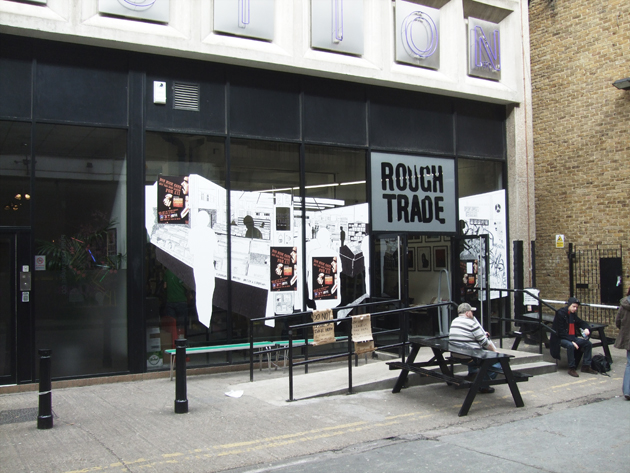
But it’s a tough market. I can’t help but not buy records anymore. Sure, once in a while I’ll pick up a rarity, a reissue, or a random collector’s item. As a physical product, especially in New York, it’s not practical. I always think about the time I had to help a friend move his 200 records from apartment to apartment while I looked at my phone and laughed at the amount of music inside of it. Sorry to sound lazy or corporate, but forget about it. It’s too cheap and easy to listen to music these days. Knock Spotify and I’ll agree with you, but damn if it isn’t economical and beneficial to the consumer. Which means that record stores these days exist almost entirely to promote culture. They venues, they create an environment. And Rough Trade, which has been a pioneer of independent culture since forming in the mid-70s, is certainly good at just that.
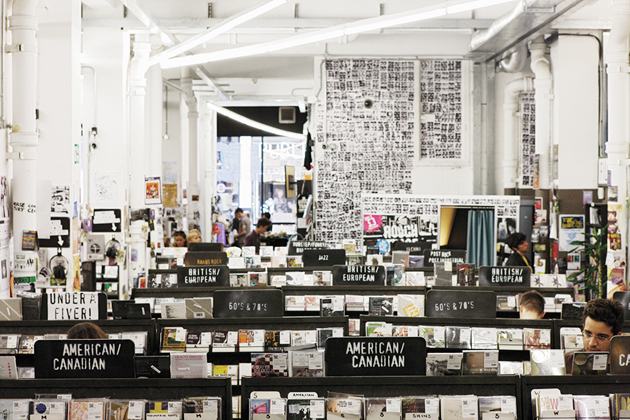
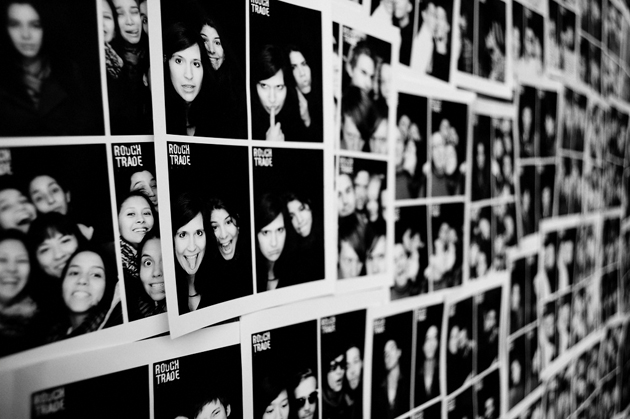
There are two other Rough Trade shops across the Atlantic, on opposite sides of London. This one has Brooklyn written all over it: there’s the coffee shop, housed inside a repurposed shipping container; the bar, and the venue. Television (yes, that Television) will play there on Saturday. Bowery is doing all of the shows, which means that there will lots and most of them will be good. Handpainted Arcade Fire and Velvet Underground ads decorate newly coated brick walls, with record aisles scattered throughout. You walk in and you wonder, is this a venue masquerading as a record shop?
“We’ve learned how what is ostensibly a store can be so much more”, co-owner Stephen Godfroy recently told The Guardian. “Visiting us is like visiting a cultural hub; it’s not simply a place for purchasing. There’s a relative lack of places [in New York] that allow people to hang out in an environment that celebrates the art, not the commodity”.
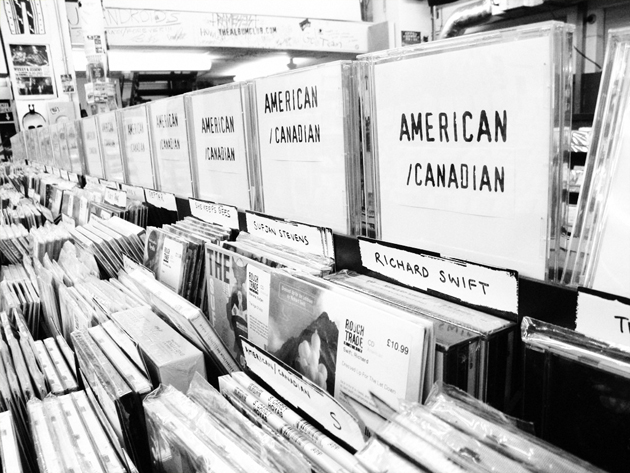
Sales at Independent record shops across America have fallen 36.1% in the last five years. And New York rent gets more outrageous by the minute. The city’s record stores have been dropping like flies: Bleecker Bob’s, Fat Beats, Tropicalia in Furs, Big City, Rockit Scientist, Dope Jams, and Williamsburg’s beloved Sound Fix have all closed within the past year or two. There are a handful of small shops surviving in Greenpoint and Williamsburg: Permanent Records, Academy Record Annex, Co-Op 87, Captured Paws. Many of these are attached to labels, which helps. (Rough Trade is no longer attached to Rough Trade Records, the label that brought you The Smiths, The Strokes, and Scritti Politti). Many of the people behind the counter at these shops are also the owners. It’s anyone’s guess what Rough Trade’s thundering presence in the neighborhood will do to their bottom line.
At Rough Trade NYC, the records themselves aren’t an afterthought, per se, but venue, the cafe, and the bar seem to be set up to make up for the loss of record sales. Which is smart, kind of like what City Lights has been doing in San Francisco since the 1950s. If the shop works like it should — by creating a progressive environment where people want to come and see shows and talk about music and art — then it seems that the store can afford to sell some records. I hope it does, but I’m not keeping my fingers crossed. This is Brooklyn, after all.
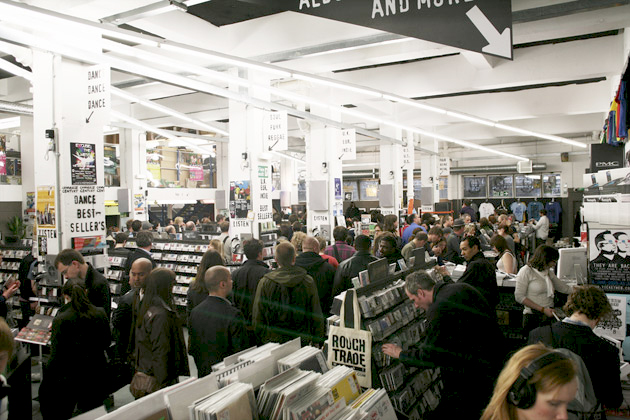
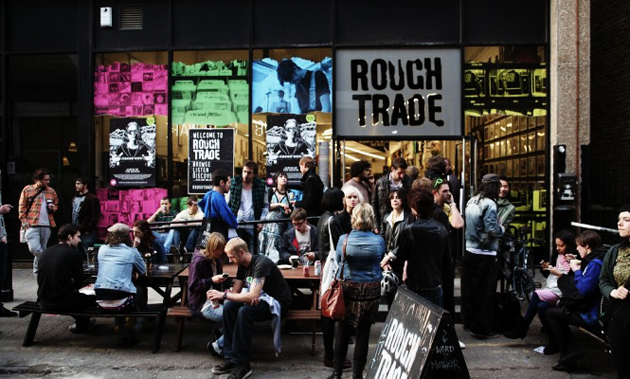
Fashion and design have always been intrinsically intertwined: both aim at creating a way of life and an approach towards the world. It should not come as a surprise, then, that the great modernist designer Charlotte Perriand, devised a clothing system for herself that bares a striking resemblance with her modular furniture. After her trip to Japan in 1940s, Perriand wrote: “A new way of living awaited me there: work, leisure, discovery, representation. I had made up my wardrobe with interchangeable ‘modules’, as in my investigations of standardisation: four skirts, long or short, for the lower body and sweaters, blouses and bustiers for the top, all of which combined to give me at least 16 possibilities”. Fascinated with “apparent simplicity”, this architect, designer, urban planner and photographer broke away from outmoded conventions, inventing new concepts for living spaces (and, apparently, the way we should dress) following the idea of functionality, purity and timelessness.
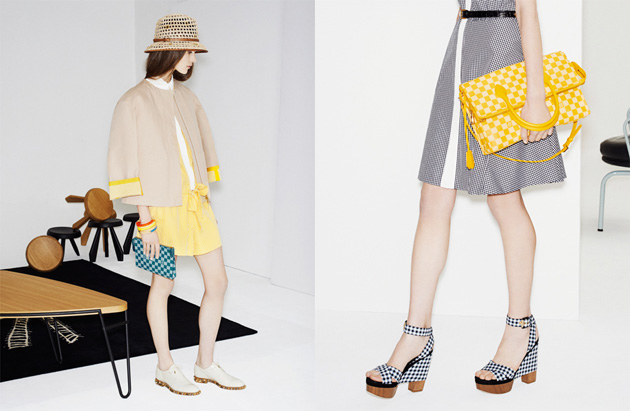
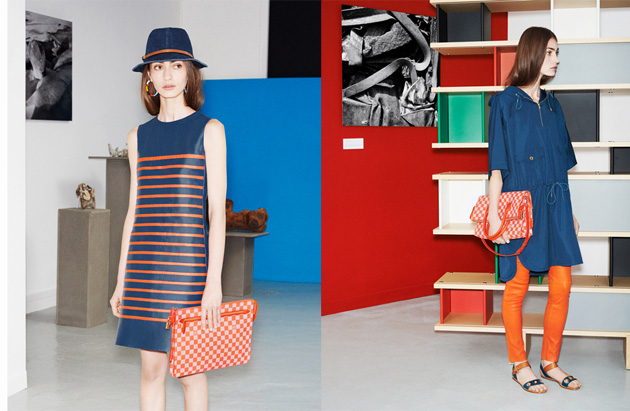
Given her incursion in various areas of creative activity, it should not come as a surprise, then, that Louis Vuitton has chosen Charlotte Perriand as inspiration for their new Icônes collection as well as the main protagonist of their ongoing design project. While we might argue that LV’s 2014 Icônes collection bears little, if any, resemblance to Perriand’s formal virtuosity or conceptual sophistication, it is nevertheless an important recognition of the crucial historical role of this previously underestimated designer.
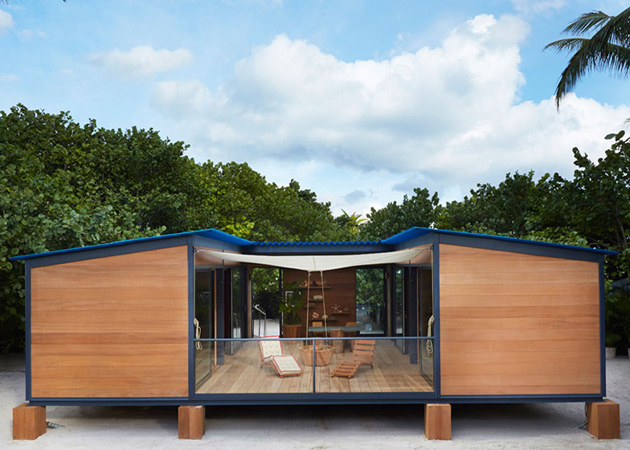
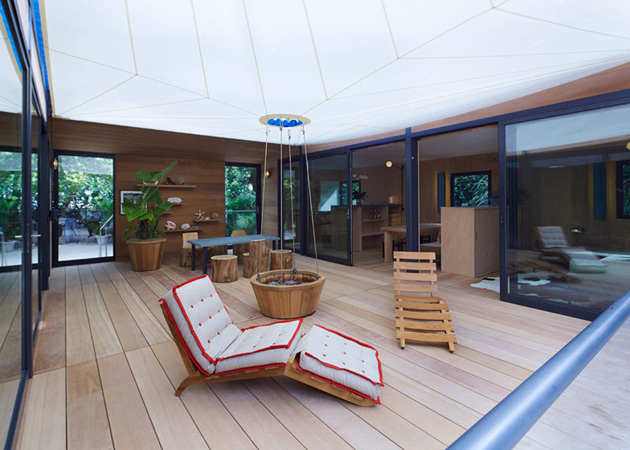
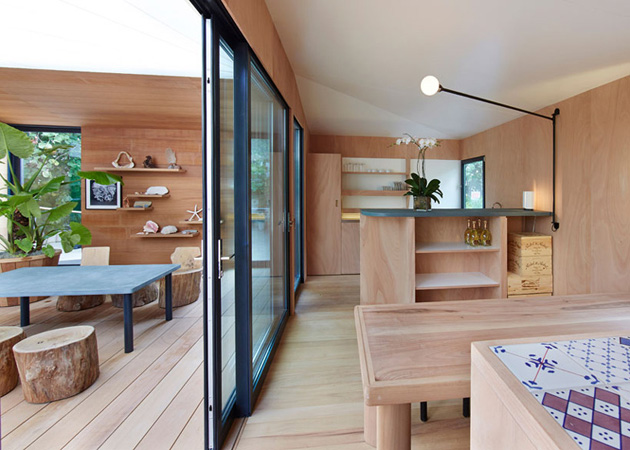
Additionally, in the occasion of Design Miami, Louis Vuitton has also built a previously unrealized beach house designed by Perriand in 1934. Perriand’s La Maison au Bord de l’Eau, was initially conceived for a competition to design cheap holiday lodging, held by French architecture magazine L’Architecture d’Aujourd’hui and has been built using original sketches and drawings. Perriand’s design originally won second prize and was later reworked for wealthy vacationers, but the original scheme was never built. Even though building La Maison au Bord de l’Eau was surely more a marketing strategy than an ode to design history, Louis Vuitton’s new projects should at least be appreciated for bringing back to life a piece of our forgotten design past.
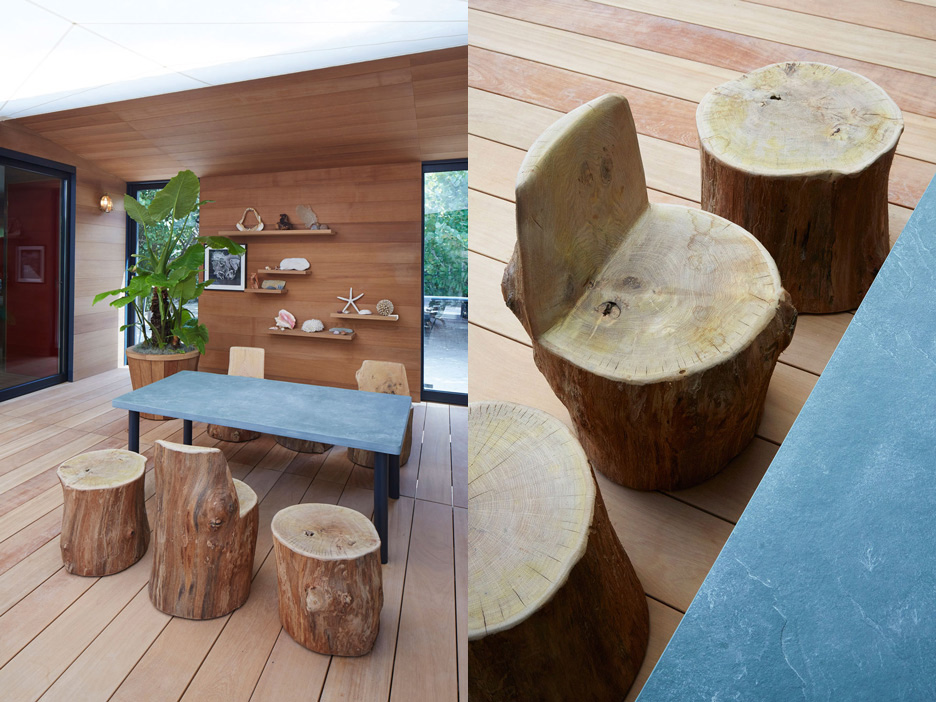
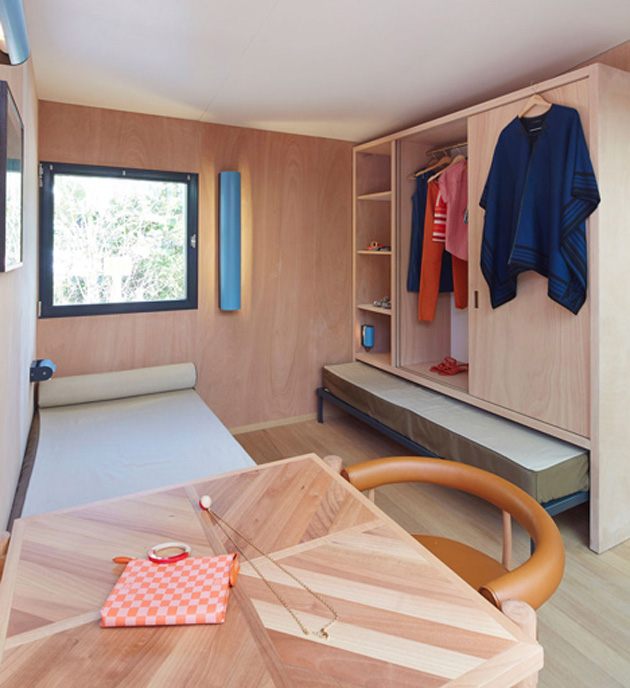
We’ve nearly made it to the end of the year and all your hard work will be deservedly rewarded with the office Christmas parties. But the question is, what will you wear?! Our suggestion, don’t go crazy with the party dress, choose things that you can mix, match and carry on wearing and if you want to keep in the Christmas spirit, a touch of red is a timeless asset.
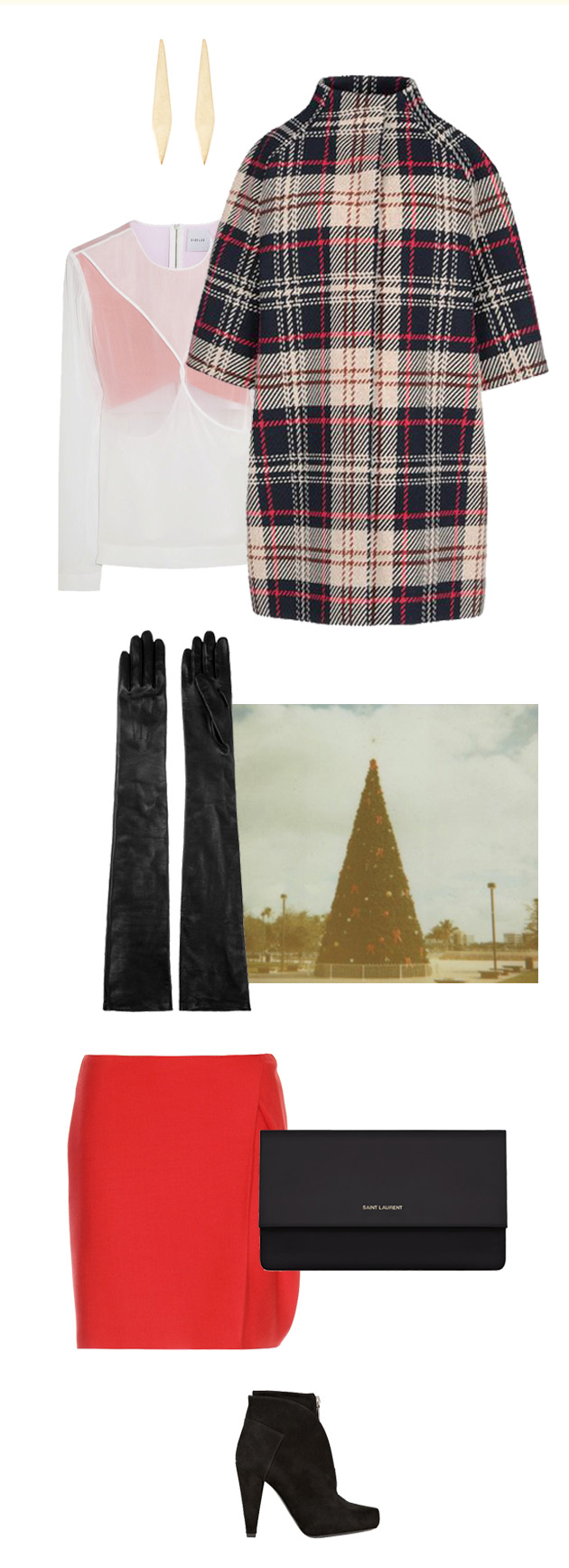
Styling by Vanessa Cocchiaro
There has been a lot of talk, and rightly so, about Sarah Lucas (b. 1962, UK) recently. The sculptures of the wildest among the Young British Artists (YBAs) were exhibited first at the 55th Venice Biennale. Then, an important retrospective celebrating her works just ended at the venerated White Chapel Gallery, in London (SITUATION Absolute Beach Man Rubble), while another exhibition entitled NOB – from the word “knob”, which can mean a round door handle, but colloquially is synonymous with penis –, along with the bad guys of art Gelitin at the Secession in Wien is still on. After a period of silence, Lucas comes back, proving that she hasn’t lost her edge and, above all, her ability to cause a stir.
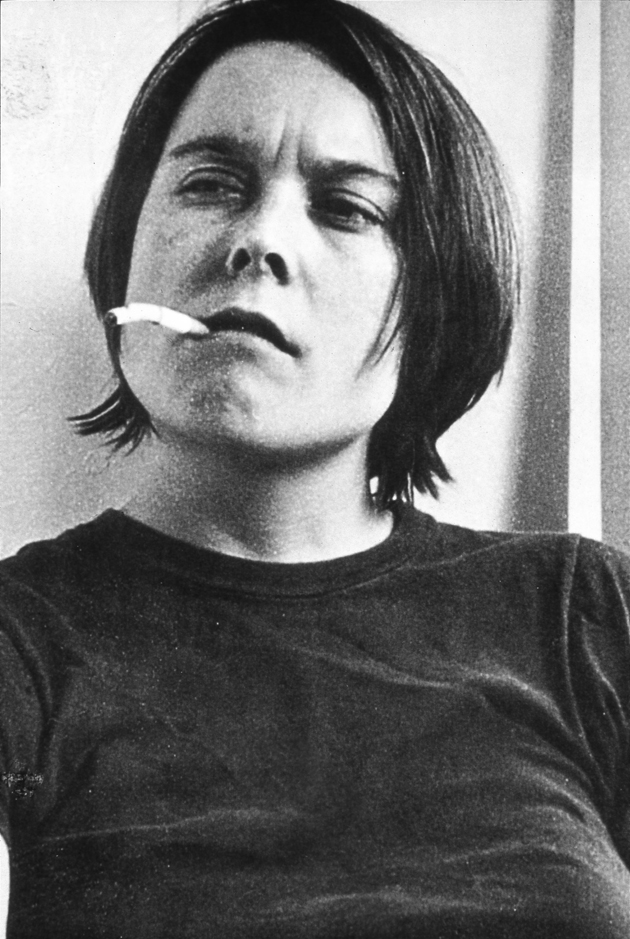
The artist, who became famous during the 90’s as one of the most outstanding YBAs, made us used to works – mainly sculpture, photography, collage and installation – rich of humour and metaphors of sex and death that challenge a self-righteous society. Using everyday materials such as furniture, clothes and foodstuffs, Sarah Lucas has developed a personal and outspoken poetic full of repressed or ignored erotic desires, grotesque and sometimes offensive images, with ridicule stereotypes and conventions in an impudent way.
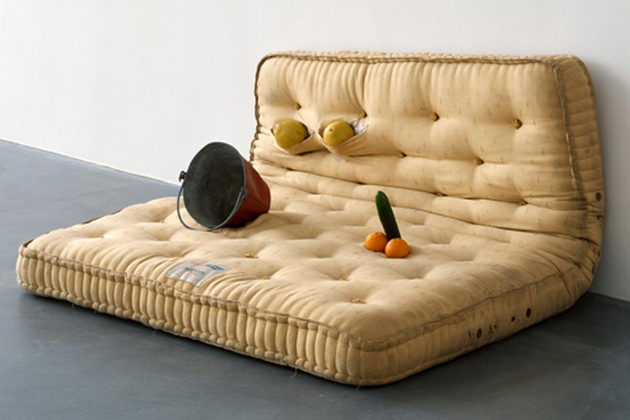
Social norms and gender roles are criticized through irony and visual puns. In Au Naturel (1994), the breasts are replaced by melons, while oranges and a cucumber stand for penis; in Prière de Toucher (2000) a small hole in a t-shirt of an androgynous body left a half-view of a nipple; in the series of Self-portraits that range from Eating a Banana (1990) to the more recent Human Toilet Revisited (1998), the artist posed simultaneously tough and abject, macho but female, creating an image of defiant femininity: “I’ve been musing on the penis, artwise, since the early nineties. Initially it was an antidote to all the tits and bums we seem to be bombarded with daily. It could also have something to do with the fact that I don’t, personally, have one. In any case I found it to be a perfectly self-contained sculptural form, ‘pregnant’ with meaning. A totem”.
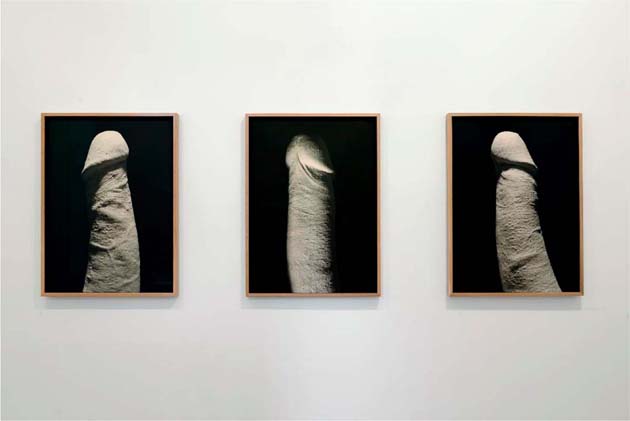
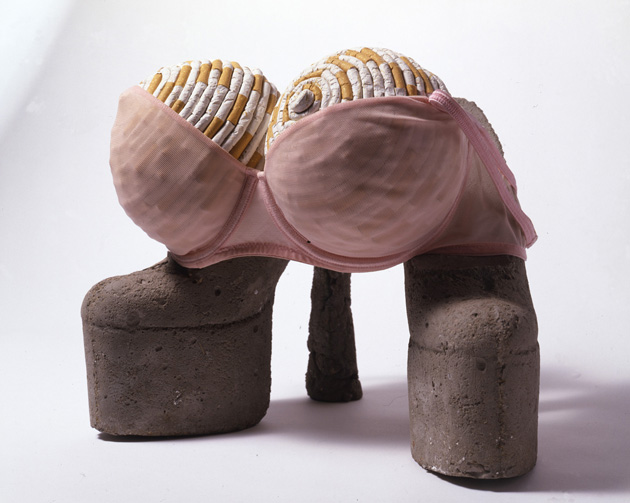
Coming from a background where the question “is it art?” was often in people’s minds, the British artist always gives an answer creating works with immediate effect, accessible and irreverent at the same time. NOB will run until January 19th 2014, if you end up in Wien and you feel like doing something aggressive and brazen, just pop in, you won’t regret it!
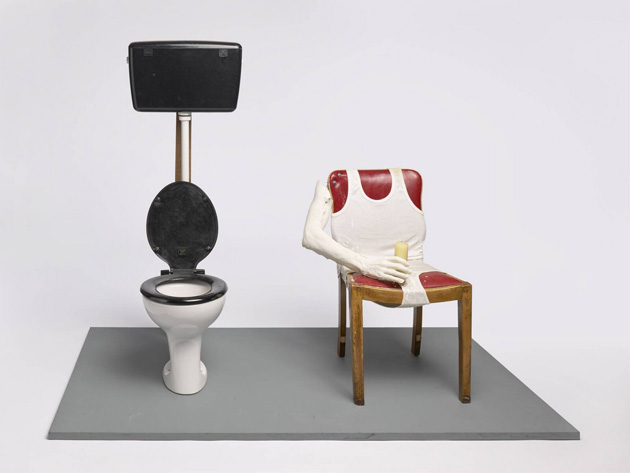
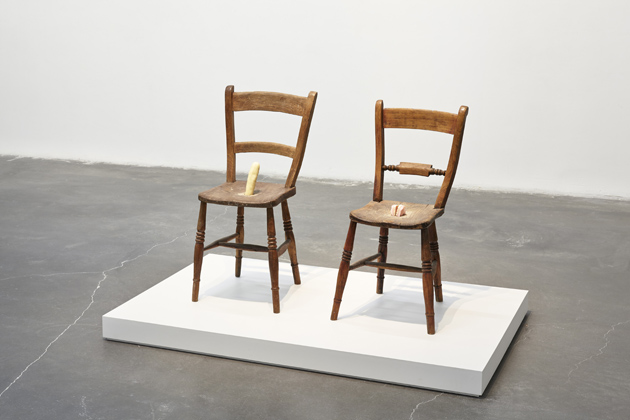
The project was born in Saragossa and took form in Rome. Can you tell us how did things go?
Yes, the project was born in Saragossa, where Emiliano and Riccardo (guitarists) were doing their Erasmus. Back in Rome, they involved me, Marco (vocals), in the project. After several changes, also Francesco (drummer) and Raffaele (bassist and synth), became permanent members of the band.
Love The Unicorn is a pretty unusual name for a man band, don’t you think?
For some people, it is a little bit ambiguous. But until now it has been quite successful.
Your first EP, Back to 98, has been released in 2011. What was it about? Has it been an important year for you or was it just a nice title for the EP?
I haven’t talked about Back to 98 for a long time. In the beginning, Bt98 was not supposed to be an official release. It was just an early experiment in a recording studio, a small workout that, when Raffaele arrived, drove us to the birth of Sports. Instead, this EP helped us to leave Rome, also due to some good reviews that we received. Bt98 talks about everyday life stories: the ’98 is just an excuse to say that if these stories would have happened in a different year, lacking of important events, it would have been easier to deal with problems and cultivate feelings.
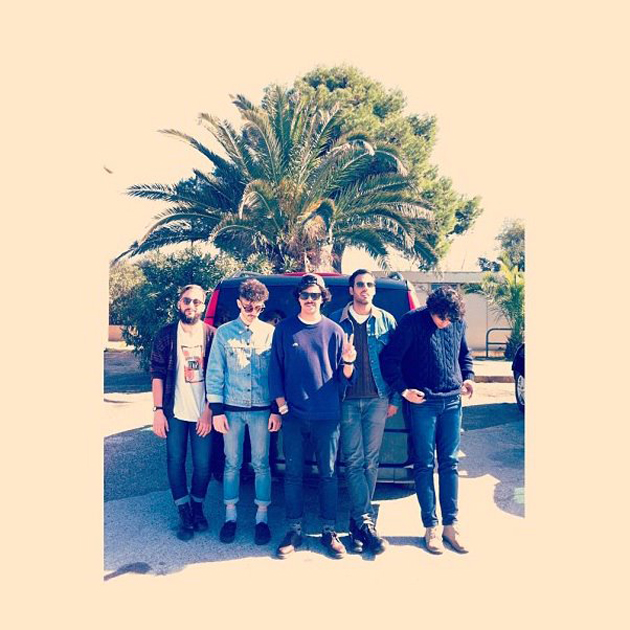
From your self-produced EP to “Sports”, the WWNBB collective appeared. How did it happen?
Sports is an EP divided into 6 pieces. It represents our maturation, our debut! After having talked to Enzo Baruffaldi, member of WWNBB, and having sent him two of our new demo tracks, the collaboration started. We were very happy to work with them, also because all our Italian music references came from WWNBB. Their professionalism and all of their knowledge in the music field, especially in this genre, helped us a lot.
How was Sports born? And how did you create the artwork of the album?
Sports is the result of an effort that lasted more than a year. We were already playing some of the songs and the great thing was seeing our songs grow and mature with us. We wanted to start in an honest and fresh way. Sports is a collection of honest songs. In this case, once again, all the lyrics talk about real life stories, more or less common to everyone. They talk about things that should make people feel better. Sports manages to sum everything up in just a single word. It is not something that you just do as an habit, but something that makes you feel good. The artwork has entirely been handled by Federico Antonini.
What about the idea for the video of Toulouse?
The idea of the video was closely linked to the one of the song. Toulouse is only an ideal location, a symbol of peace; the place where you can escape to with your mind, as Disneyland for a child. Hence the idea of collecting videos that date back to the early years of Disneyland in California. It has been edited by Francesca Erba.
You have opened the concert of the Swim Deep and the Splashh in Rome. How did it go?
Both of them went well. For us it is always a pleasure to share the stage with foreign bands that we admire. You always make new friends, receive new compliments and criticisms and sometimes even advices. A date that we will always remember with a lot of pleasure is the one that we shared with Holograms in Milan. They are hilarious and we have created a beautiful relationship with them. We hope to meet them soon.
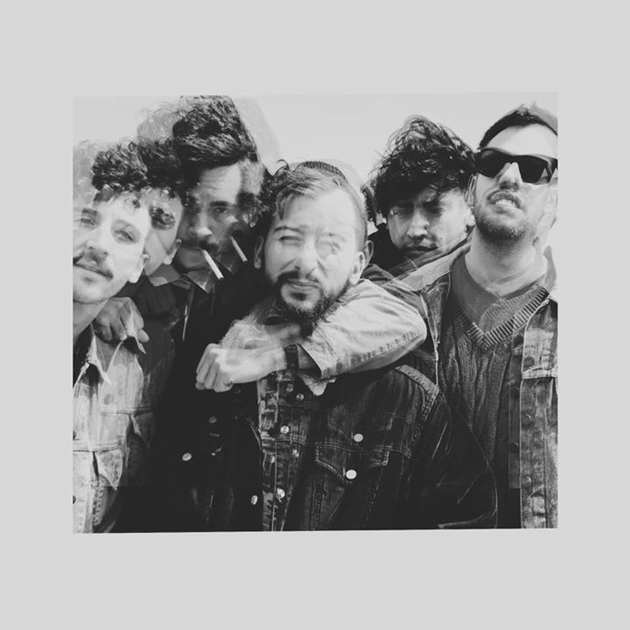
Is there any band that has inspired your sound?
Each of us has different musical influences, that are really useful when we create a new song. Sometimes we are compared with big international names. We feel like we don’t belong to it.
Is there any band’s concert you would like to open or viceversa? Which band would you like to open one of your lives? You can shoot high.
There would be too many. Sometimes it’s better not to think about these things. We would love to share the stage with Mac DeMarco and his band. At least, we are sure it will not be bored.
Your sound is particularly summery or at least for me it is. Do you agree with this or do you think that an album like Sports is also suitable for a month like December?
We fully agree, but it is also true that winter can bring back a summertime nostalgia. We think this is an album for every season.
Can you live off music or is it just a passion at the moment?
Let’s say that for now our music career is self-perpetuating. For the moment, we are not losing money despite all the expenses that an artist has. This also allows us to invest in new projects, and it’s not a trivial matter.
What’s coming up in 2014?
We will end up promoting Sports for a few last dates. Then we will lock ourselves in the studio to work on new things. We cannot wait to come out with a new album but at the same time we don’t want to do things in a hurry.
Will there be any dates abroad? I have noticed that there is a great interest in you in other countries.
We have received many proposals from other countries, particularly from England, but it has been difficult to finish everything. We can say that we didn’t want to do it too early. In the end we consider ourselves a relatively ‘new’ band, we still have to mature in many aspects and in any case it will better to go abroad when we have a real album. However, the interest is very high. Despite the release with the English Dufflecoat Records, which is still working well, Sports came out also in France and Japan on some online stores. When someone asks us on Facebook when are we going to play in France, Holland or even in Mexico, we are incredibly pleased. We hope to make them happy one day!
Have you ever played Robot Unicorn Attack – Heavy metal? I highly recommend it to you.
It’s one of the essential applications on our i-Phones!
The bicycle has always had a special place in European cities’ imagery: from Vittorio De Sica‘s Bicycle Thieves cruising Rome in search of a stolen bike, to Queen‘s highly contagious Bicycle Race refrain; from cycling events such as Tour de France or Giro d’Italia, taking us on a tour of incredible European landscapes, to classic postcard pictures of cities like Amsterdam or Copenhagen. Europe is imbued with cycling culture and its inhabitants are well acquainted with the beauty and liberty found on two wheels. While masterpieces of film and literature such as Hopper‘s Easy Rider or Kerouac‘s On the Road could never have been conceived in Europe, wondering around the narrow, winding and utterly charming streets of its cities offers space for reflexion, contemplation and endless imagination.
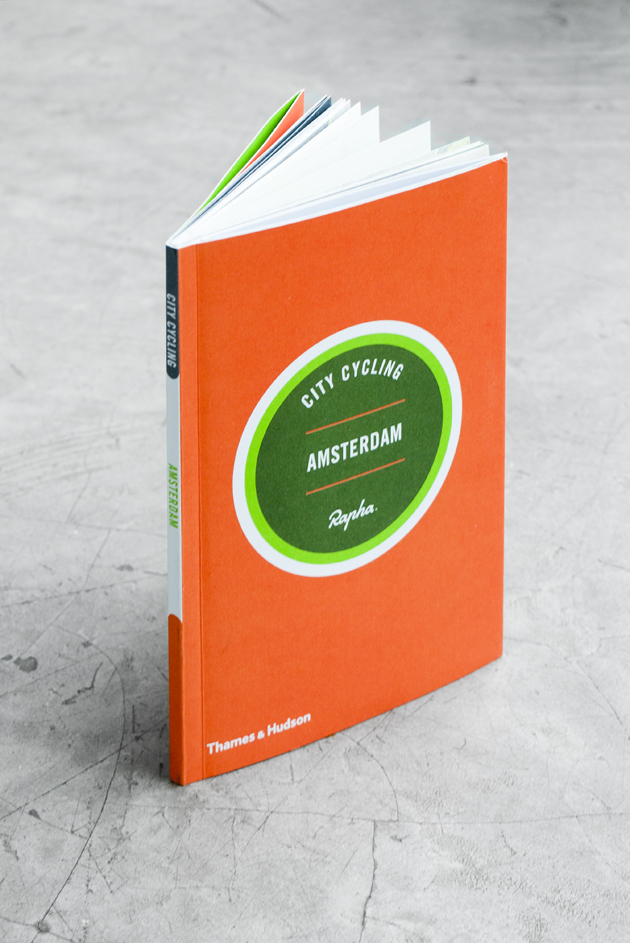
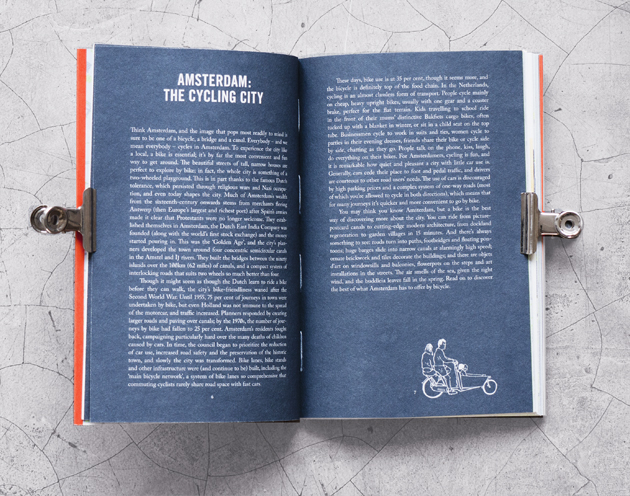
Playfully engaging with this urban myth of a two-wheeled tour of European cities, Rapha has developed a series of special guides for cyclist. Rapha City Cycling Guide is a series of pocket-sized guides to eight major cycling cities of Europe, published in collaboration with Thames and Hudson. Amsterdam, Antwerp and Ghent, Barcelona, Berlin, Copenhagen, London, Milan and Paris are described in eight different guides, characterized by a mix of eclectic tips for soaking in the best of each city, ranging from local curiosities to major tourist attractions. Equipped with a set of detailed maps with cycling lanes and routs, each guide was illustrated by different artists, adding a touch of local charm to the publication.
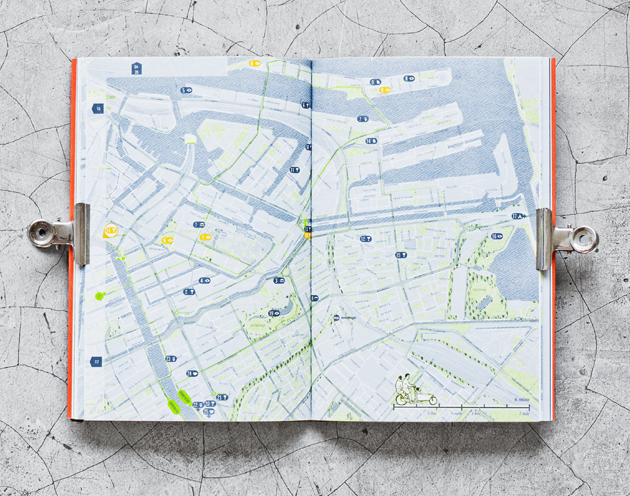
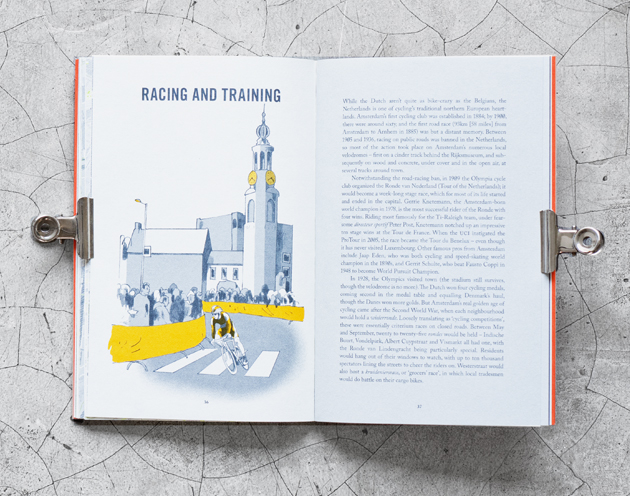
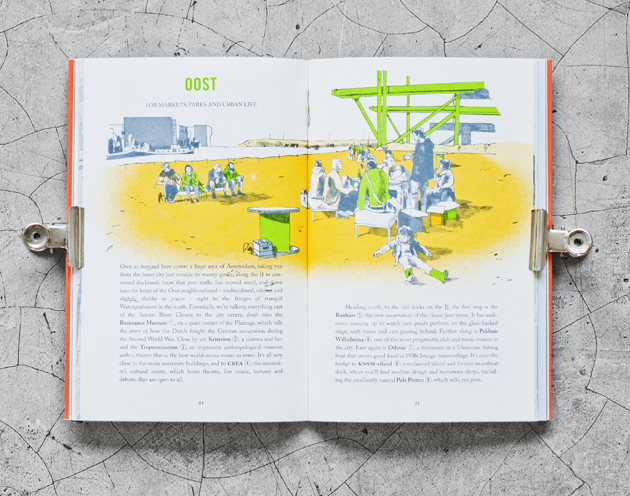
While bicycles are steadily becoming the preferred means of transport in Europe, as well as across the Atlantic, with these guides it may also be worth considering a relaxing vacation on two wheels in the upcoming months. After all, just as John F. Kennedy once said, “Nothing compares to the simple pleasure of a bike ride”.
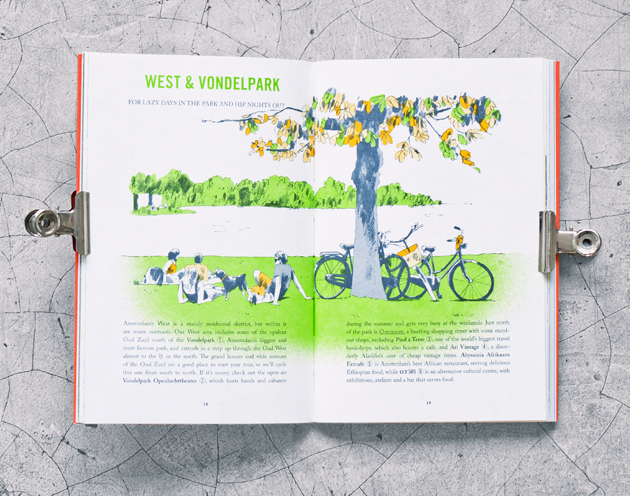
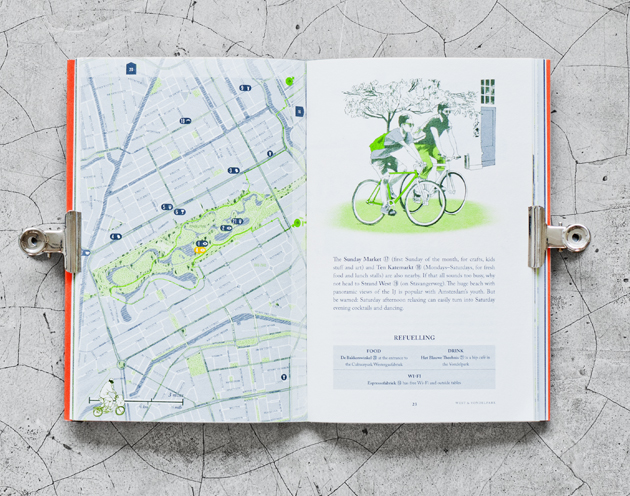
The significant improvement LGBTQ (lesbian-gay-bisexual-transgender-queer) individuals made in fashion, is now being celebrated and showcased at the Fashion Institute of Technology, in New York. A Queer History of Fashion: From the Closet to the Catwalk has been curated by Fred Dennis and Valerie Steele, who spent two years doing research and organizing the exhibition. The result of their huge effort is an exhibition that explores, for the first time in a museum, this important impact. Although today most of fashion designers are completely free to express themselves, in the past it was not easy as it is today.
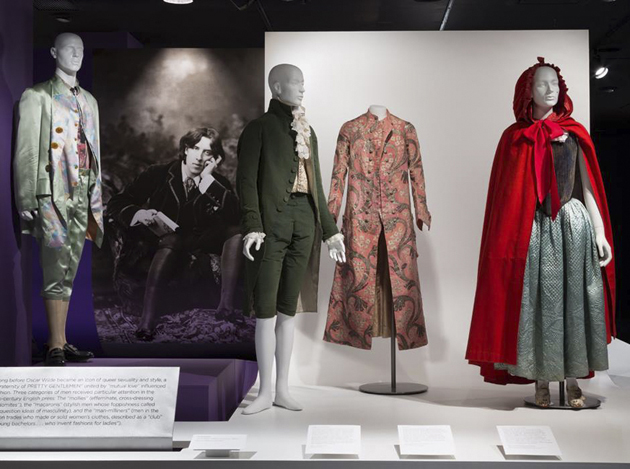
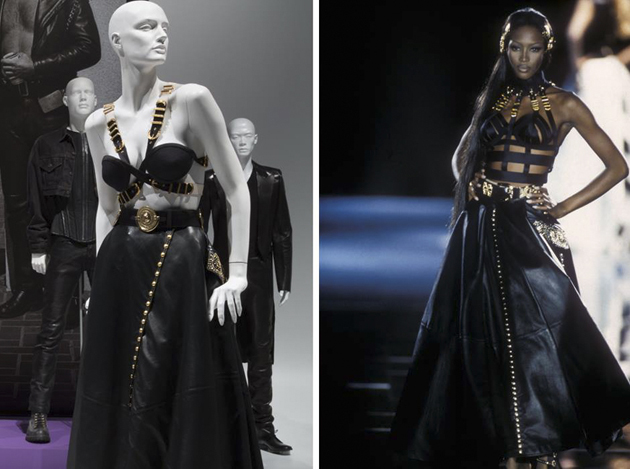
There are many examples, starting with Dior, who wanted to keep his homosexuality secret; but also Yves Saint Laurent and Pierre Bergé, whose relationship was discovered after many years of career. With this preamble, the show aims also to encourage people to embrace their diversity and to make clear how those people have changed the rules of fashion, by transforming it into a modern social movement.
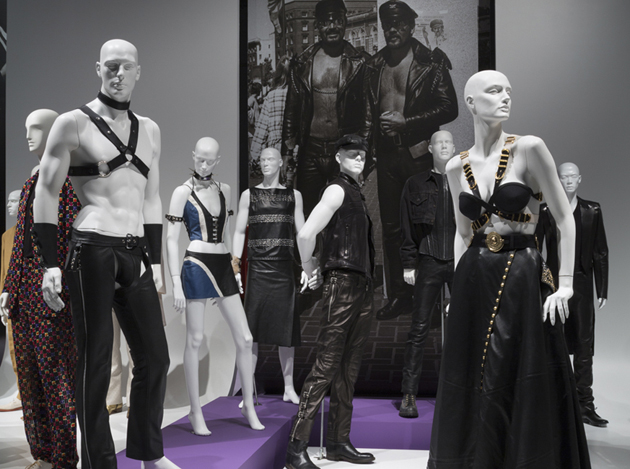
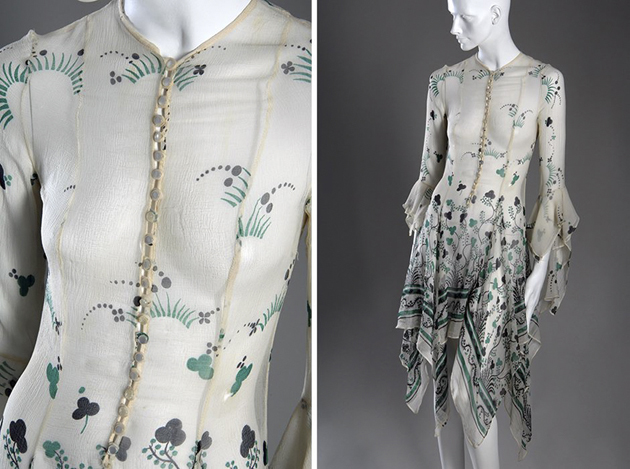
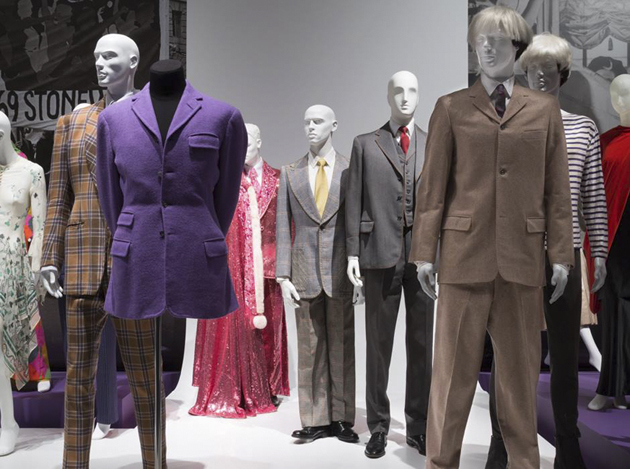
This show features approximately one hundred ensembles, from the 18th to the 21st century, over three hundred years. Subjects like androgyny, dandyism and the transgressive stylistic approach are shown together with the influence of several subcultures and street style movements. A section is dedicated to the ones who died of AIDS, along with a range representing gay marriage. The exhibition is a good way to underline human rights for each individual and will run until January 4th.
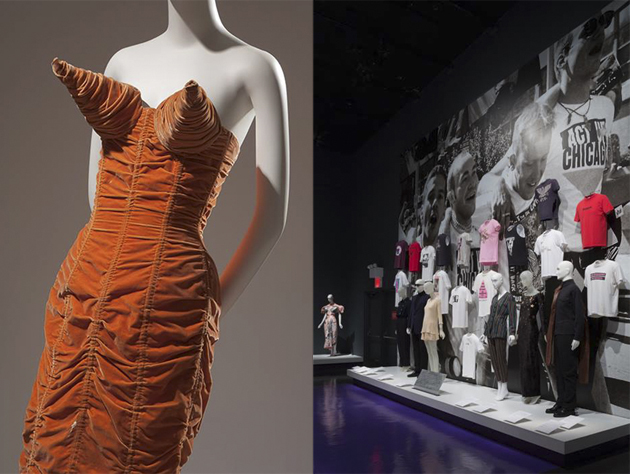
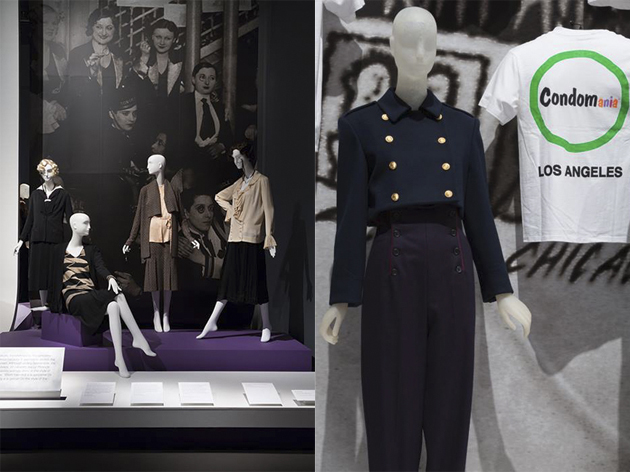
It’s 12 o’clock of a cold winter morning when we arrive to the Raffaella Cortese Gallery, to interview Ms. Jana Sterbak (b. 1955, Prague), the Canadian artist, that has just opened an exhibition with the emblematic title Human condition: the limits of our freedom. The atmosphere is warm and relaxed. We feel at ease. The conversation starts.
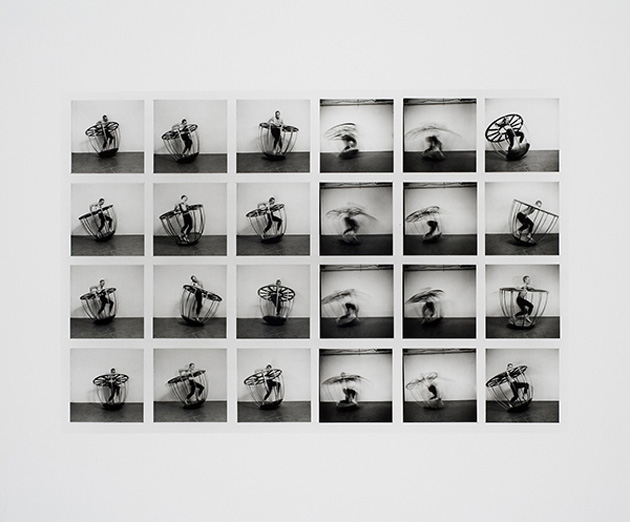
You have constantly analyzed the human condition, in all its emotions. In most of your works we can see people under restraints. Proto-Sisyphus (1990) and Remote control (1989) are just some examples/metaphors of players unable to act freely, so let’s start from the title of this show, which are the limits of our freedom?
Well, I think there are many things in our lives that we don’t choose, but we just have to do them. We have to accept the situation in which we are born, the location and the familiar circumstances, that will somehow affect our lives. But you are not asked if you want them or not. It is something that you have to accept and handle. This is one of the conditions of our freedom that we have to deal with.
How do you react when you feel impotent or caged?
You know, I’ve been lucky. I mean, I feel luckier than many other people, because I have a lot of freedom. The reason why I can reflect on these issues is that I have all this freedom. Many people who have their time occupied by daily work, family and children do not have the freedom to even think about all these things: they just have to go them through. I think the role of artists is to sit and think about what they see and then analyze it.
You often show the perishability of human bodies and their vulnerability. In Catacombs (1992) we see parts of a human body, the same with Golem (1982), a kind of dismembering ritual with a strong and primary aptitude that seems to tend to death. What does the body fragmentation and the process of degeneration mean to you?
I think that it’s the same thing for everyone. It means that we are not going to be here forever and that we have to do our best to take care of ourselves and stay around longer, to learn what life is about, because if you die too young you will not have the opportunity of discovering a lot of things. It is also about the fact that we all have to die and the soonest we can make it real, the better is for us as human beings.
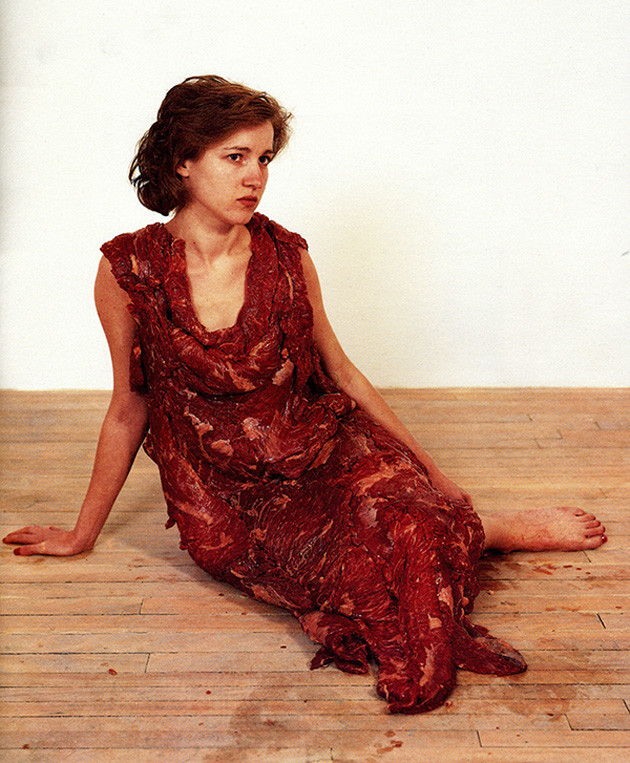
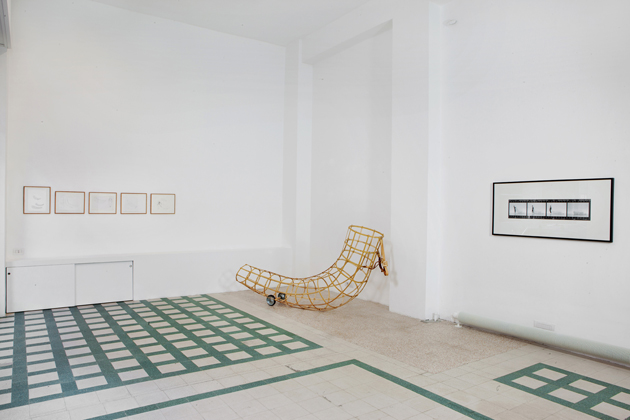
But why do you choose such a strong way to express it?
Because I consider it a direct and clear way. It is a strong issue, you know, it is an important reality a lot of people want to ignore, but we all have to die, one day or another. It’s useful to be prepared.
What do you think about the current, somehow desperate, fighting against the process of time?
Well, I think it’s just a matter of extension of certain things, but it’s not a solution. It’s just like building a sand castle next to the sea… the sea will sweep it away, so it is the same situation. It isn’t a cure.
Today women are described as fragile, scared, abused, underestimate, but also as independent, aggressive and courageous. To which kind of woman do you feel closer?
This is hard to say, I can only be myself. I don’t have children and as you see my life is fairly free. It is difficult for me to give you an answer. However, there are certain biological phenomena that make women age quicker and be more vulnerable because of their reproductive system. These are biological facts, but we also have a cultural history in which we are placed. I think that nature is still unfair to women because until recently, without medicines or contraception, the sexual act was potentially dangerous. Only since the Sixties’, the sexuality has become equal between men and women. But we still have two different kind of sexualities and I think it is a matter of both biology and cultural condition, that affect all women’s lives.
Fighting against patriarchy is a key factor that always rules the work of another artist of this Gallery, Kiki Smith. But while for Louise Bourgeois this approach was focused on men’s destruction, Smith drives her attention to women’s diverse forms of mourning. What’s your position?
I think that we have to accept it, because there is nothing we can do about it. There are always going to be various degrees, but it won’t completely change. I think it is better to be aware and conscious of it. If people have daughters, they should let them know earlier how life is, because it is something that we can’t completely eradicate.
Don’t you believe that women are able to “evolve”, transforming themselves in a kind of Hecate, embodying the maiden well aware of her nature and power, and able to move between objective and unconscious reality?
Oh yes, it’s possible, but again, I think it’s not available for everybody. Certain good conditions, like the ones of birth, physical or beauty maybe, certain intellectual properties and confidence are required. It’s a conjunction of many issues; temperament also… These are those kind of things that you have to be born with. Of course you can create them: your creation is part of it, but what is given at birth is fundamental.
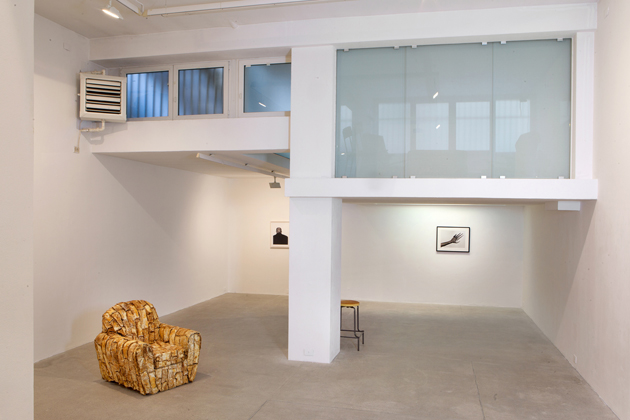
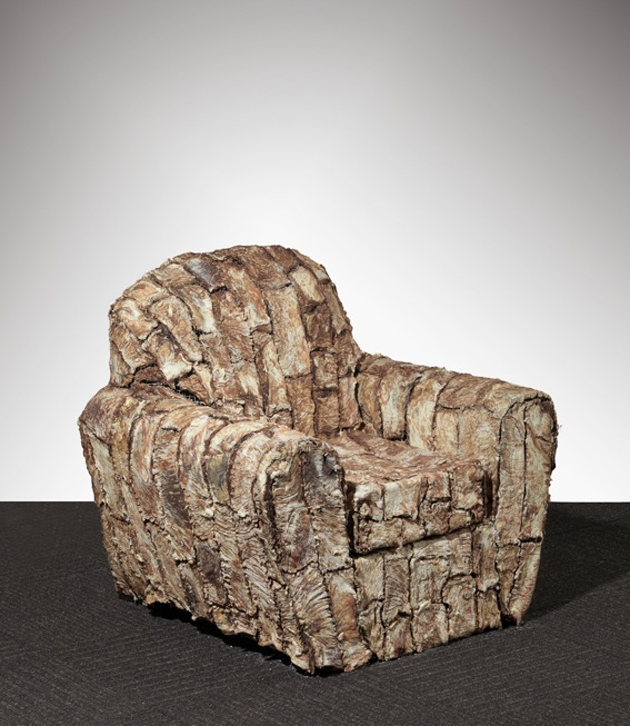
Creating art can be seen as the result of a post-traumatic experience, a kind of exorcism or an emotional release. What does “making art” mean for you? And, how would you describe your process of creation?
Not for me. For me it’s a matter of transforming ideas into forms, because having ideas is always very nice, but it’s not demanding, while transforming ideas into physical realities is something challenging and for me it’s a way of being in the world, of learning and getting new stimulations. So, depending on the different things that I produce, I need help and information. The research is the most interesting part. For me, creating is a learning process. Ideas evolve through the necessity to make them concrete, giving them substance and a shape. This informs me about issues that are not necessarily formal issues.
What do you do when you are not creating?
I read a lot. It makes me relax.
Many young artists seem to take inspiration from a period that you have lived intensely – the 70’s -, but for some or most of them it is just a matter of aesthetic, since the 70’s and its issues are gone. What do you think about it?
It’s hard for me to comment that in general, because I don’t teach. But let’s take the example of this exhibition in Venice, When attitudes become form: the fact that people want to recreate something that existed in those years is already a signal that we are leaving in a society with a lot of nostalgia, a lot of “looking at the past”, and this could be very dangerous itself; but on the other hand, those years were incredibly fruitful, giving rise to a lot of thinking and art making that we have not processed yet. I guess this is the reason why they are constantly coming back. Of course, I think that we have to do new contributions, but not everybody can do them. I think we can get information from the past and apply it to the future. It is very important for all the artists, for all the people who make creations, to know what happened in the past and to be very aware of what’s happening now. In that way we can create things that are going to be useful in the future. I don’t know if people are doing it right now, because I live in my own universe, but I think that being young now is more difficult; there are less opportunities, everything is more expensive, so many things have already been done, so it’s hard for me to judge.
When you created Vanitas: Flesh Dress for an Albino Anorectic (1987), did you expect such a strong effect on the audience?
No, not at all. It was something that interested me and I thought it was a good idea. When I created the flesh dress, I was more worried about the practical things. I think I create with the same strength, perhaps less spectacular, but when the scandal came up in Canada I was very surprised, even if it didn’t touch me so much. The fact that people still talk about it and that it has been copied by Lady Gaga really surprise me, because that piece is the same age as this girl. I think that she would have meant something else. Anyway, I guess I should be happy to see that this work, which is historical by now, is getting a new life.
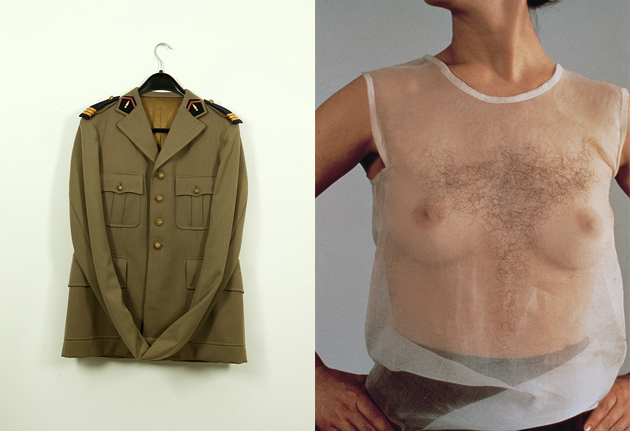
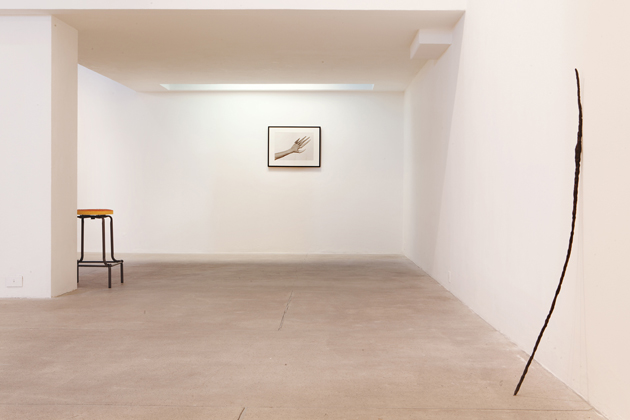
Are there any events that you consider the most important in your life?
Perhaps the facts that I was born in another country and that my parents moved to Canada when I was a teenager. Arriving in a different place at a very young age made me realize the relativity of values, customs, you know, being in a country where everything was different made me reflect on what was important and what I really liked.
Do you feel Canadian now?
I couldn’t live in the Czech Republic anymore, but I don’t feel Canadian. The European values that I inherited are not 100% compatible with the Canadian ones, but living there is easy, I feel fortunate of having landed in Canada, because it is a very supportive place for artists. The society is accepting people’s differences and it is simple to be free.
My last question, a personal curiosity. You are an intimate artist, have you ever kept a diary to write and draw your thoughts?
Not really, I keep a kind of recorder of ideas, when I do not have time to execute. There are periods in which I have a lot of ideas, so I just make notations and sketches and I go back to them later, when I have more time to develop them. But it’s not really a diary about what I do. I used to keep a diary with all the films that I’ve seen and all the books that I’ve read, but I stopped doing it. I don’t now why…
Time goes by very fast and, even if we could have talked to Jana for hours, we don’t want to take advantage of her kindness. Just the time for a guided visit of the show talking about the positive and negative aspects of the cyclicality of life, the symbols of power, the contemporary tendency to uniformity and commercialization and the issues related to gender. Thank you and good bye, Jana.
The exhibition will run until February 8th 2014, if you are around don’t miss it!
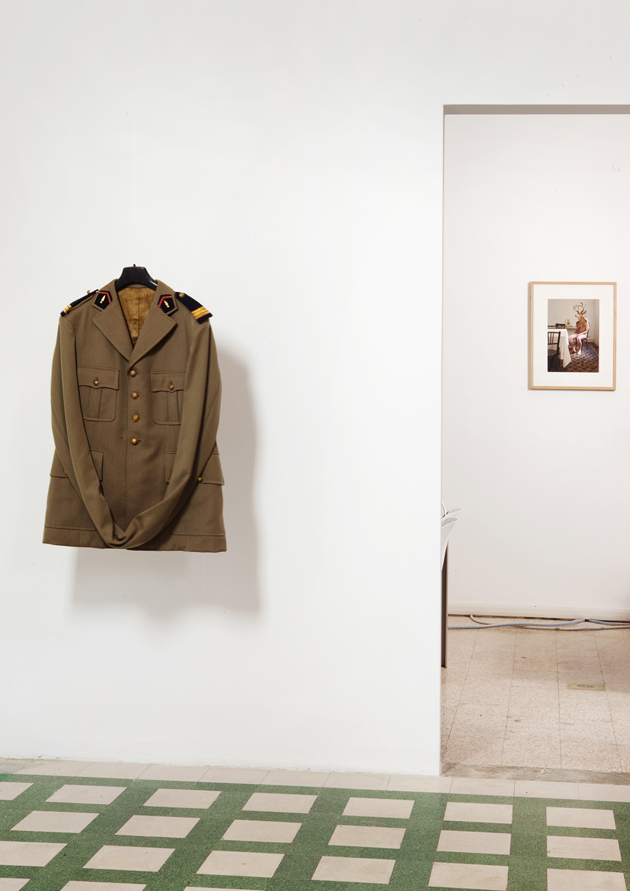
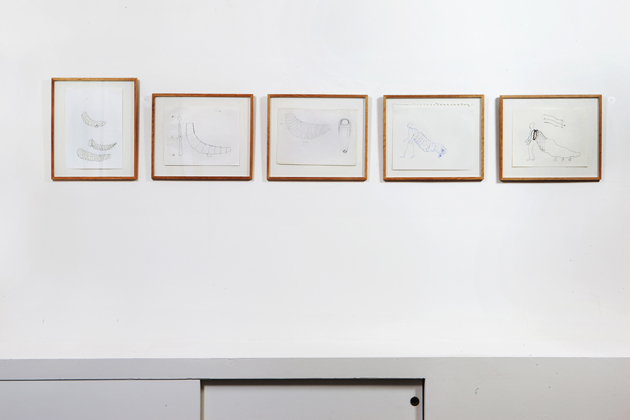
We went to Paris and despite all the well-known places, we found new spots, new food, new drinks. Strolling La Promenade, listening to the crazy jazz of Sun Ra, or watching Leos Carax movies at Les Amant du Pont Neuf – it was one of those extraordinary examples of cinematic narrative and beautiful love stories.
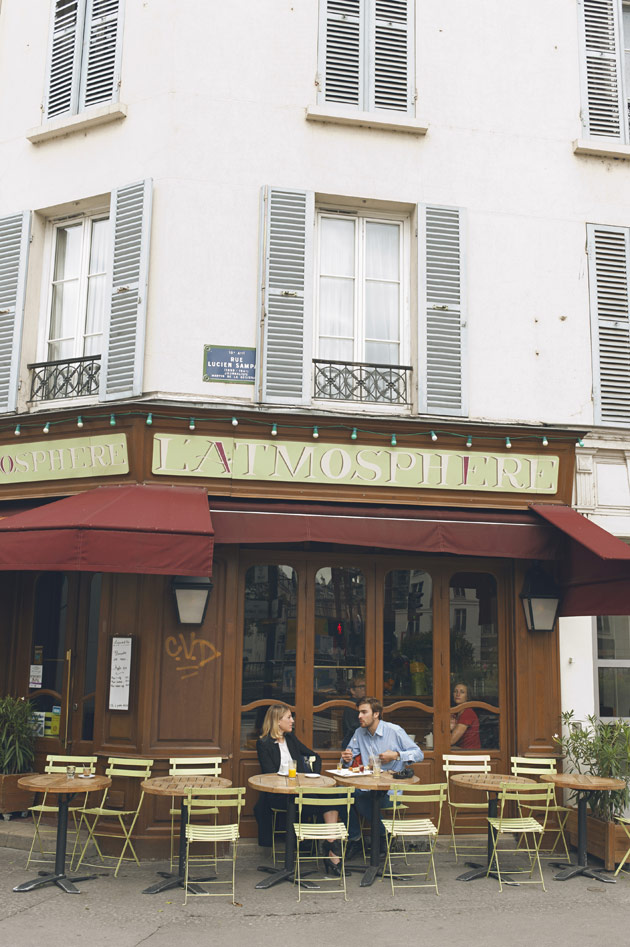
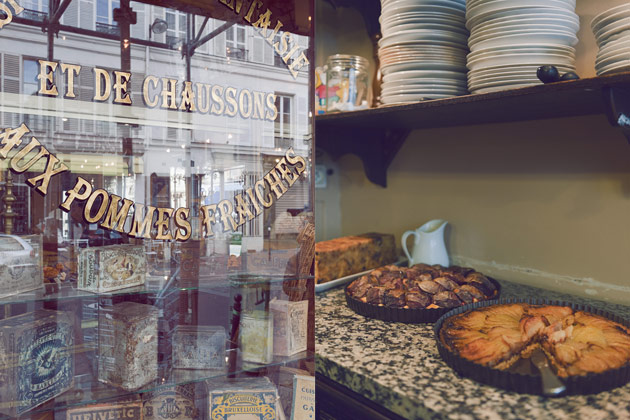
At Marché Couvert Saint Martin, in the 10th district, take your time to eat at Au comptoir de brice, a restaurant run by Brice Morvent, semifinalist of Top Chef 2010. Also make sure to pass by the “boulangerie” Du Pain et des Idees (10th district): since 1870, they have been producing bread in a traditional way. If you want to try something untraditional while in Paris, take a step by japanese Kunitoraya Villedo (2nd district). Steamed sushi, tempura, Onigiri and Udon. In this restaurant, you are almost bound to eat with chopsticks and make a lot of noise while eating noodles.
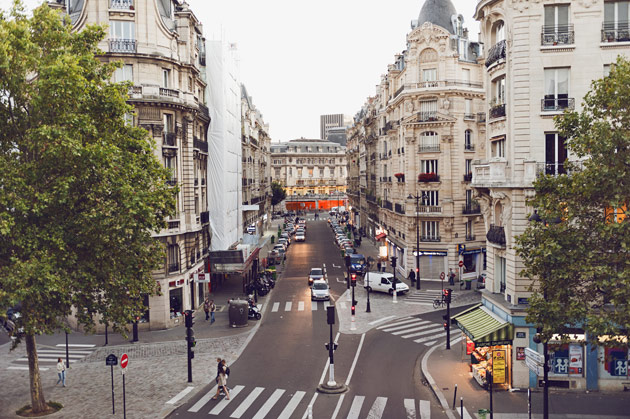
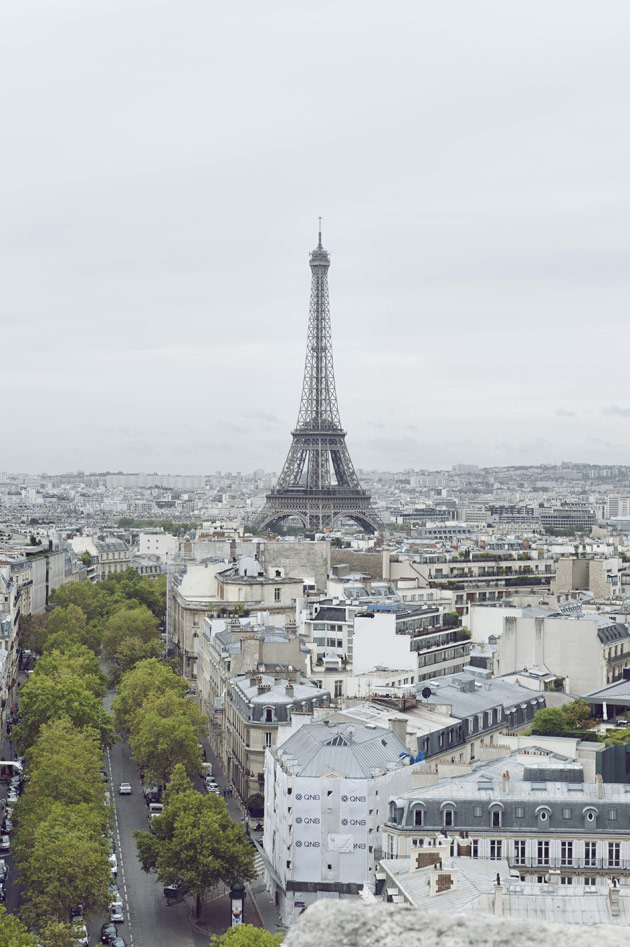
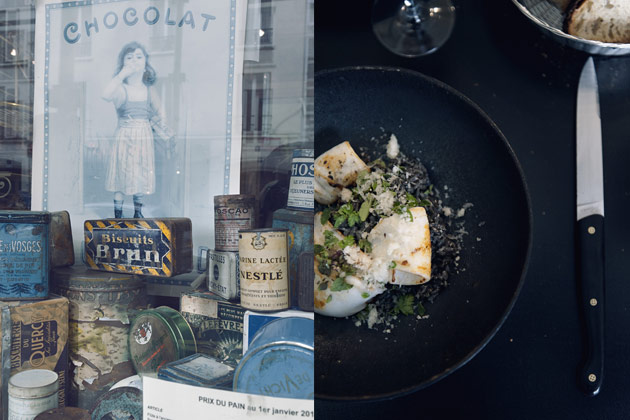
Another interesting stop is Vivant (10th district), a lovely little restaurant, run by notable chef Atsumi Souta. Visit Ladurée, in rue Bonaparte (2nd district). Take the tea, taste their famous macarons and dive yourself into Sofia Coppola‘s Marie Antoinette. We can’t forget Caves des Abbesses (18th district), a small winery built inside a liquor store. This is the perfect place to enjoy a glass of wine accompanied with cheese and salami. It’s characterized by an intimate and suggestive atmosphere, loved by Parisians.
